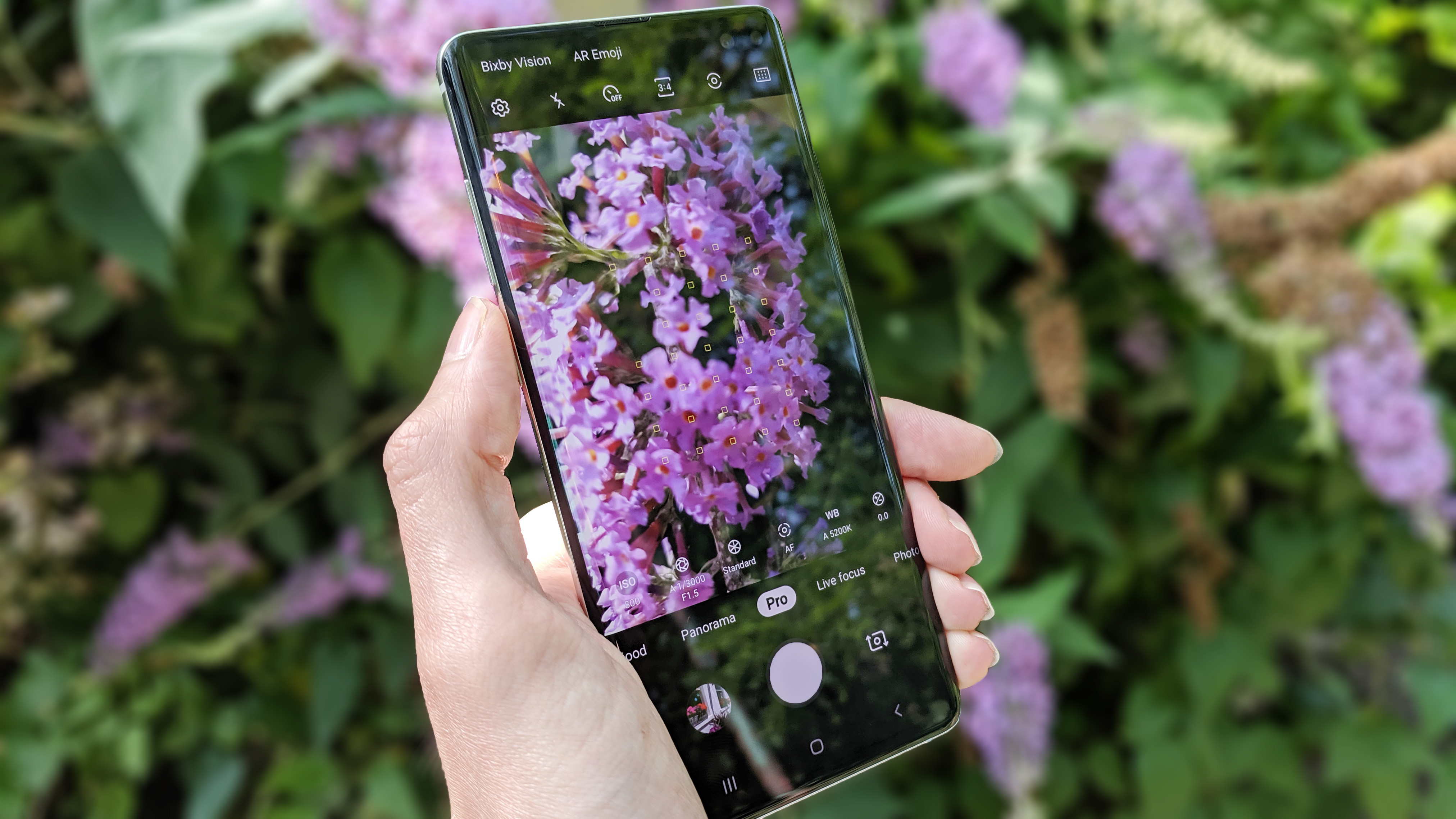Digital Camera World Verdict
The Samsung Galaxy S10+ has a fantastic camera array, packed with decent imaging features. Although Samsung may trail the likes of Huawei for sheer camera hardware innovation, the Galaxy S10 Plus nails the basics with terrific image quality and flawless Auto mode performance.
Pros
- +
Brilliant steady shot mode
- +
Telephoto & ultra-wide cameras
- +
Excellent image quality
- +
Superb Auto mode
Cons
- -
Nothing ground-breaking
- -
'Only' 2x zoom from telephoto camera
- -
No Time of Flight camera
Why you can trust Digital Camera World
The Samsung Galaxy S10+ has been a hotly-anticipated camera phone, but for photographers using Android handsets, there’s currently a huge amount of choice, no matter what your budget.
For instance, the Google Pixel 3 has amazing processing powers, the Huawei P30 Pro has a hugely-powerful quad-camera array and a mighty 48MP sensor, while the Sony Xperia 1 has made waves with its video performance. Check out our best camera phone buyers guide for our latest top camera phone picks.
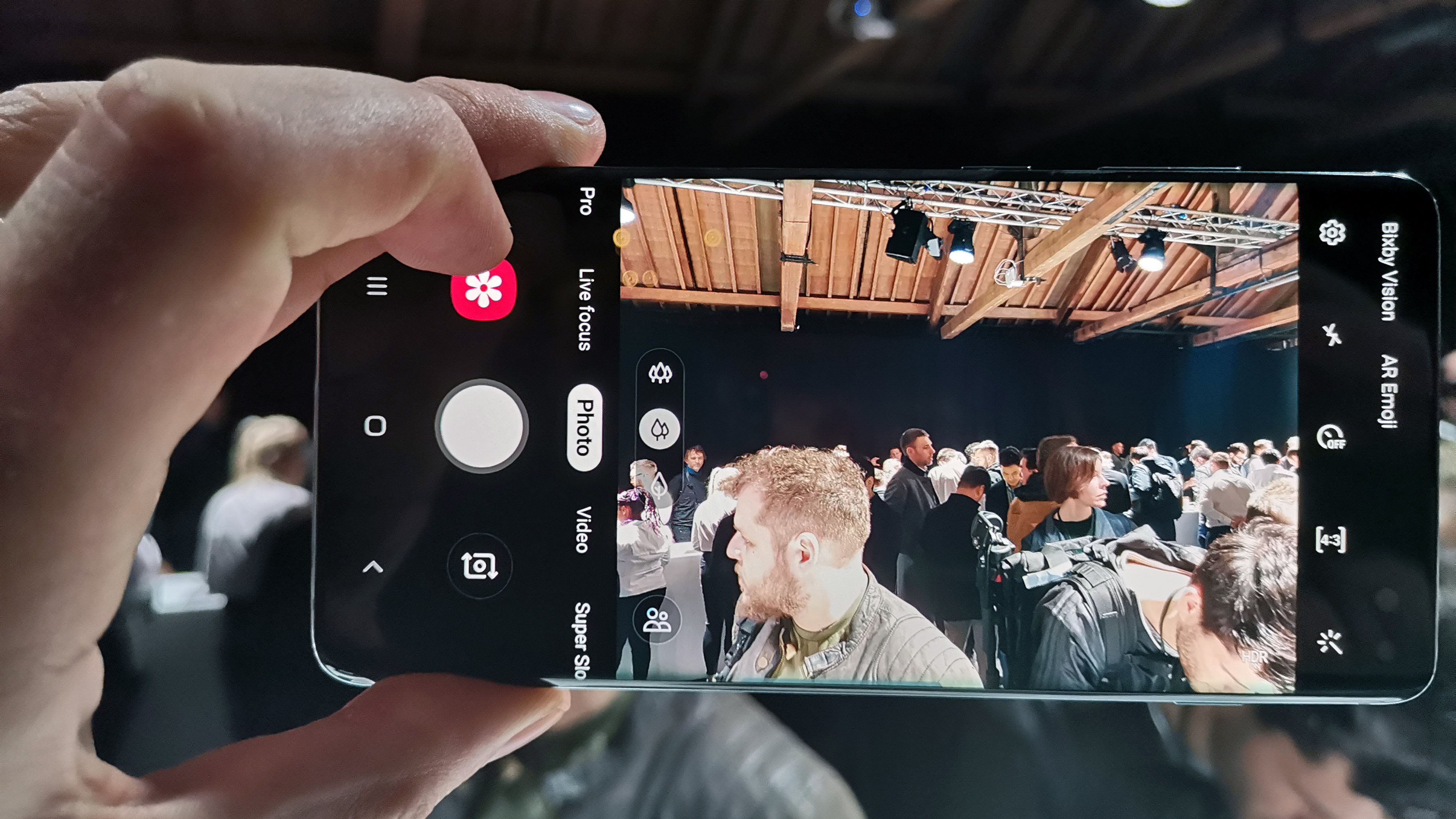
Samsung Galaxy S10+ camera: design and features
As soon as you lay eyes on it, you’ll notice that the Galaxy S10 has changed the physical positions of the cameras significantly from the S9.
The rear cameras are now arranged horizontally rather than vertically down the centre.
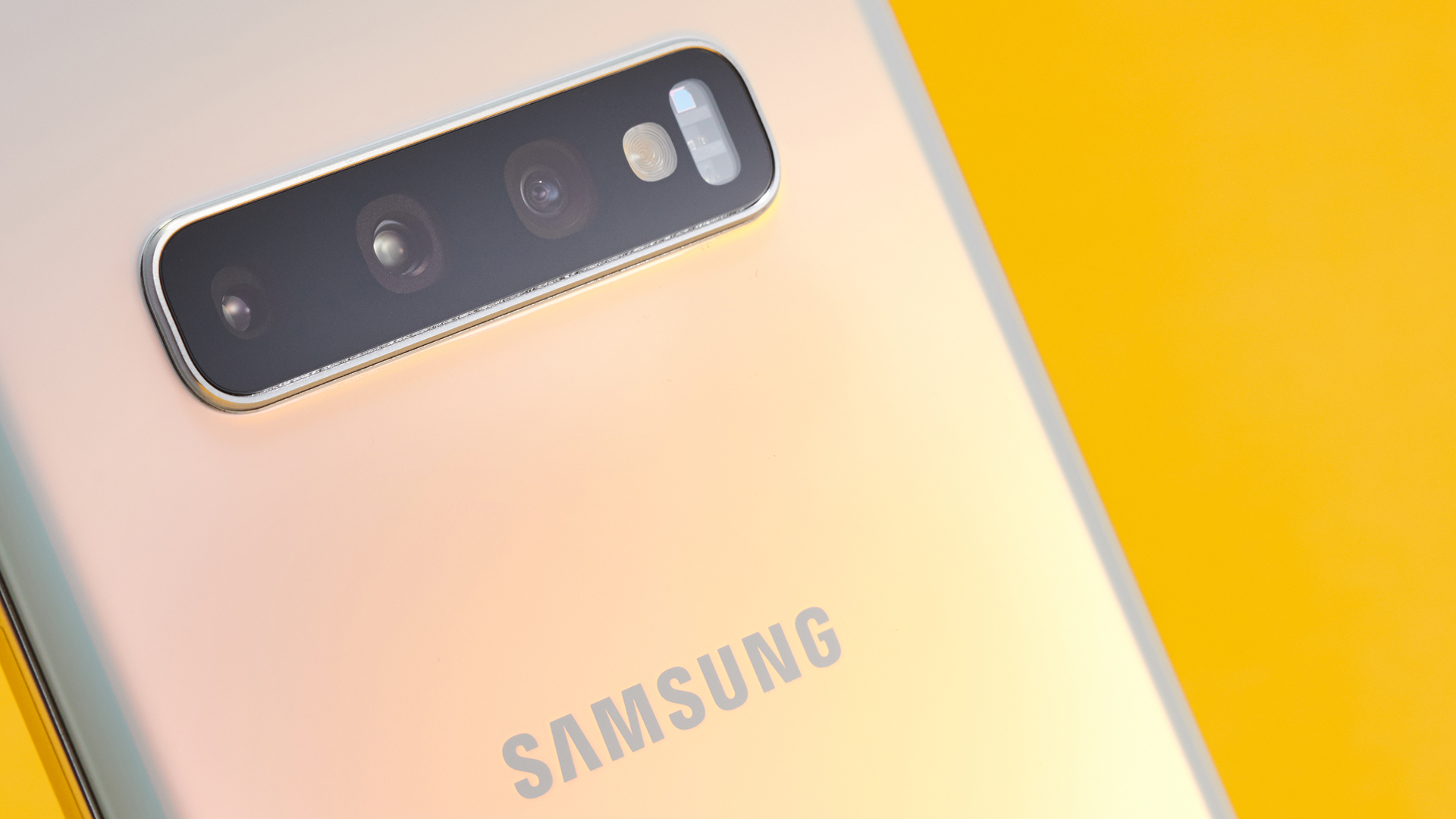
This is just as well, as the S10+ features three rear-facing cameras plus an LED flash. Laid out horizontally in this position means your fingers are always well away from the cameras. You're very unlikely to get a stray finger encroaching into the corner of a photo, as can easily happen when using a phone with a corner-mounted rear camera.
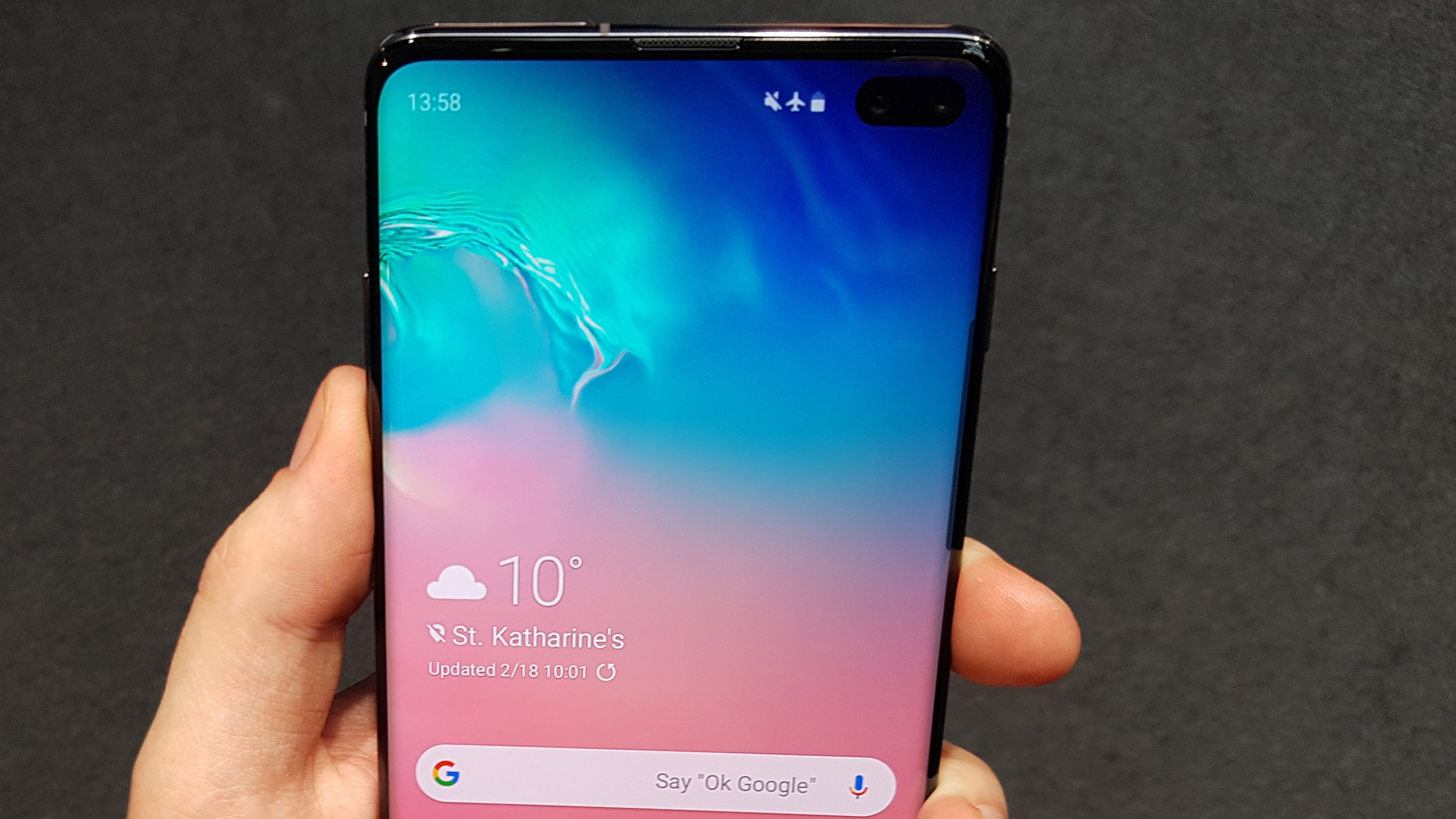
Meanwhile on the front, the bezel containing the selfie camera has disappeared. Samsung’s new Infinity O display on the S10+ puts the dual front-facing selfie cameras in a little oblong punch-hole in the top right of the screen.
This won’t make you take better selfies or anything, but you will be able to enjoy the stunning 6.4-inch AMOLED display with its colossal 1440 x 3040 resolution without the usual display notch spoiling the view. Samsung's solution results in a large, almost uninterrupted display that's makes photo capture and gallery viewing a real pleasure.
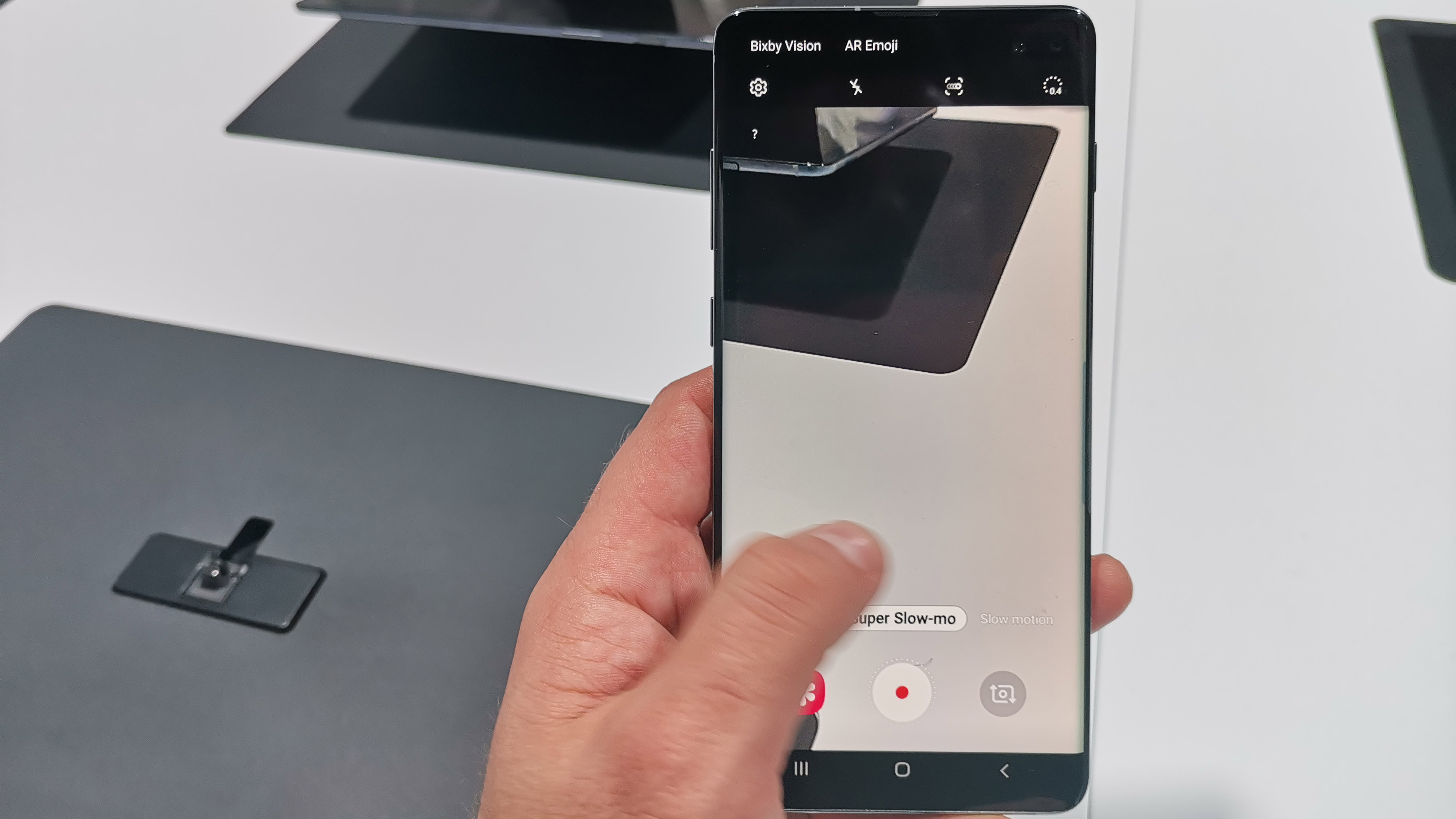
Considering the amount of tech Samsung has stuffed into this phone, it’s impressive how sleek the S10+ feels in the hand, at just 7.8mm thick. The returning Edge Screen helps a lot, making the phone feel even slimmer and letting your thumb sit more naturally around the edge of the phone. Those bevelled edges don't give you much surface area to grip while snapping photos, but the polished metal edges on the S10+ aren't actually as slippery as they may seem, especially when compared to phones that use a satin finish that can almost feel Teflon-coated.
Samsung Galaxy S10+ camera: specs
The primary camera in the S10+ uses a 12MP, 1/2.55-inch sensor with Dual Pixel Phase Detection AF for faster, more accurate autofocusing. Its 26mm-equivalent lens has a large f/1.5 max aperture and optical image stabilisation, giving the camera decent low light potential.
The second camera in the rear-facing trio is another 12MP sensor, but its lens is equivalent to 52mm, effectively giving 2x telephoto zoom compared to the primary camera. It also features OIS, but not Dual Pixel AF.
The third rear-facing camera is a 16MP ultra-wide module that provides a 12mm-equivalent focal length for a huge field of view that's ideal for capturing large group shots or architecture at close range.
The S10+ also adds a front-facing 8MP depth sensor camera to assist the primary 10MP, f/1.9 selfie camera. This is to help produce more convincing shallow depth of field effects and enhanced fake background bokeh blur.
Rear cameras compared
Scroll through each gallery to see how the three rear-facing cameras compare in terms of their field of view:




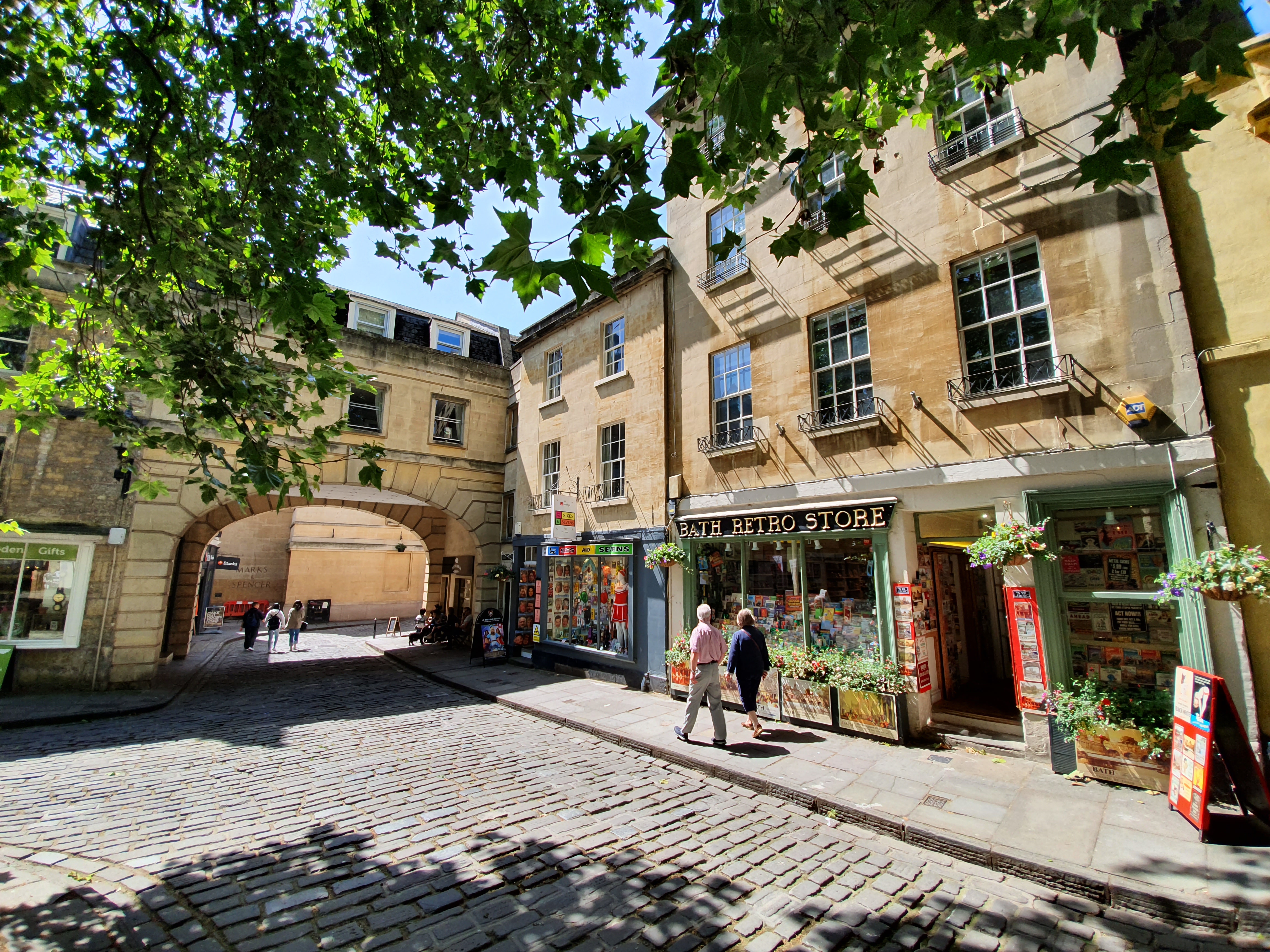

If you’re an inexperienced photographer, or want to see how Samsung’s AI matches up to your own skills, then you can activate Best Shot. This mode consults Samsung’s proprietary library of 100 million photos to see how the scene in front of you can be best captured.
You point the phone towards your subject, and after considering the scene for a moment, the S10+ will draw a line across your screen with a circle on it.
Tilt the phone until the line’s horizontal and point the centre of your screen at the circle and it goes yellow, taking the shot for you. Good for making sure you don’t take landscapes where the horizon and the top and bottom edges are noticeably not parallel.
There’s also scene optimisation, which uses 30 scenes (10 of which are new for the S10+, including a scene for photographing your pets), to subtly change the colours and tone to make your images look their best.
Then there’s the Live Focus options, which let you play around with background effects, like bokeh, desaturation and spinning blurs while keeping focus on a subject. You can use this on either front or rear cameras too, making it a versatile tool for some effects based photography.
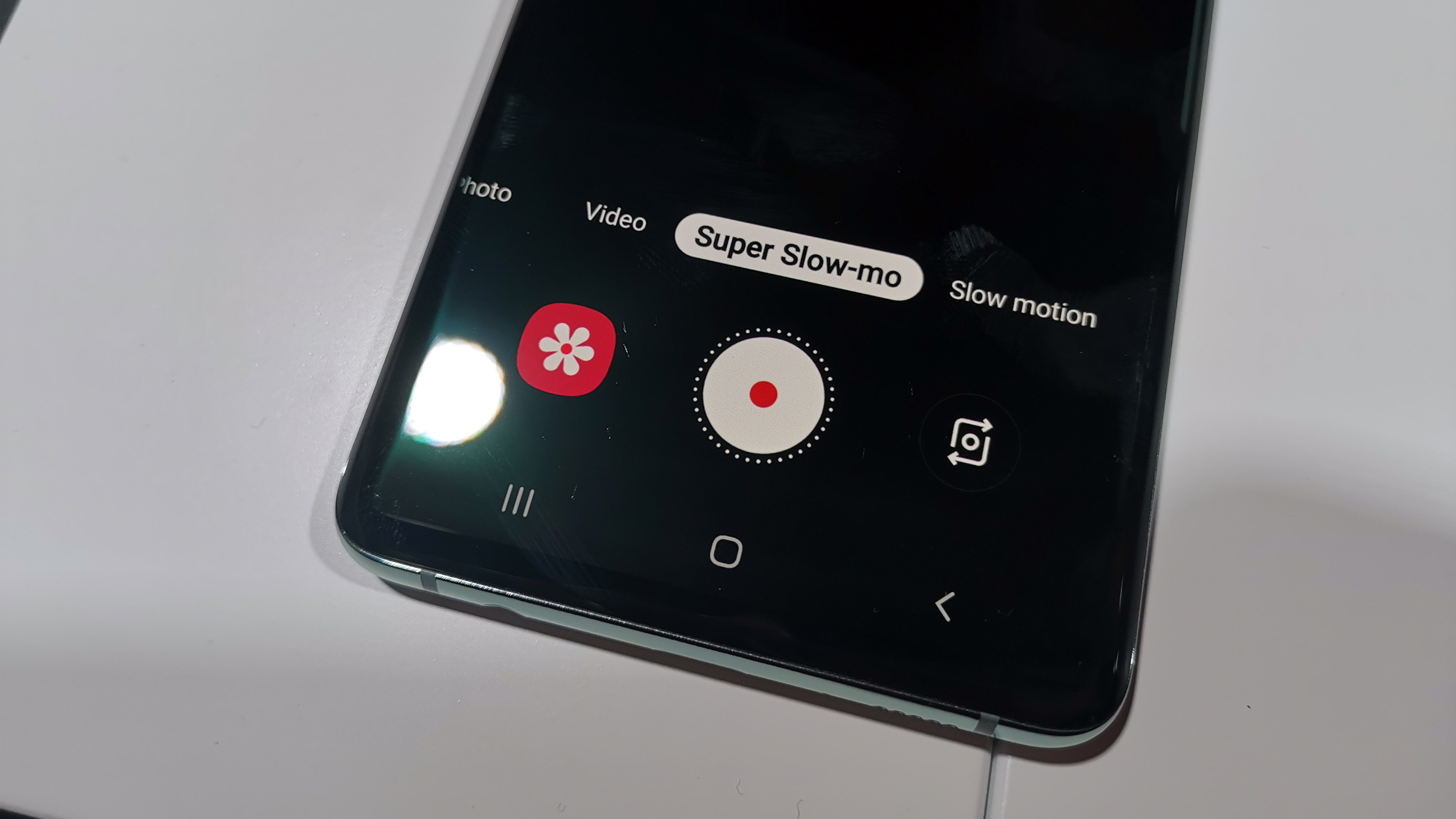
Videographers, particularly those trying to record in unsteady environments, will appreciate Super Steady Video. The camera records video using the ultra-wide lens, but doesn’t use the whole of the video frame for the final render. Instead it tracks and crops in on your subject, similar to an old pan-and-scan procedure, making it much easier to keep your subject steady and always in frame.
You can also record video in HDR10+ to gain extra dynamic range, plus there's slow motion and super slow motion video, letting your record at 240 or 960 fps respectively.
Samsung Galaxy S10 range
There are four different cameras in the S10 range... the S10+ is the flagship 4G model, with models beneath it. But there is also the S10 5G. All four camera phones have slightly different camera configurations:
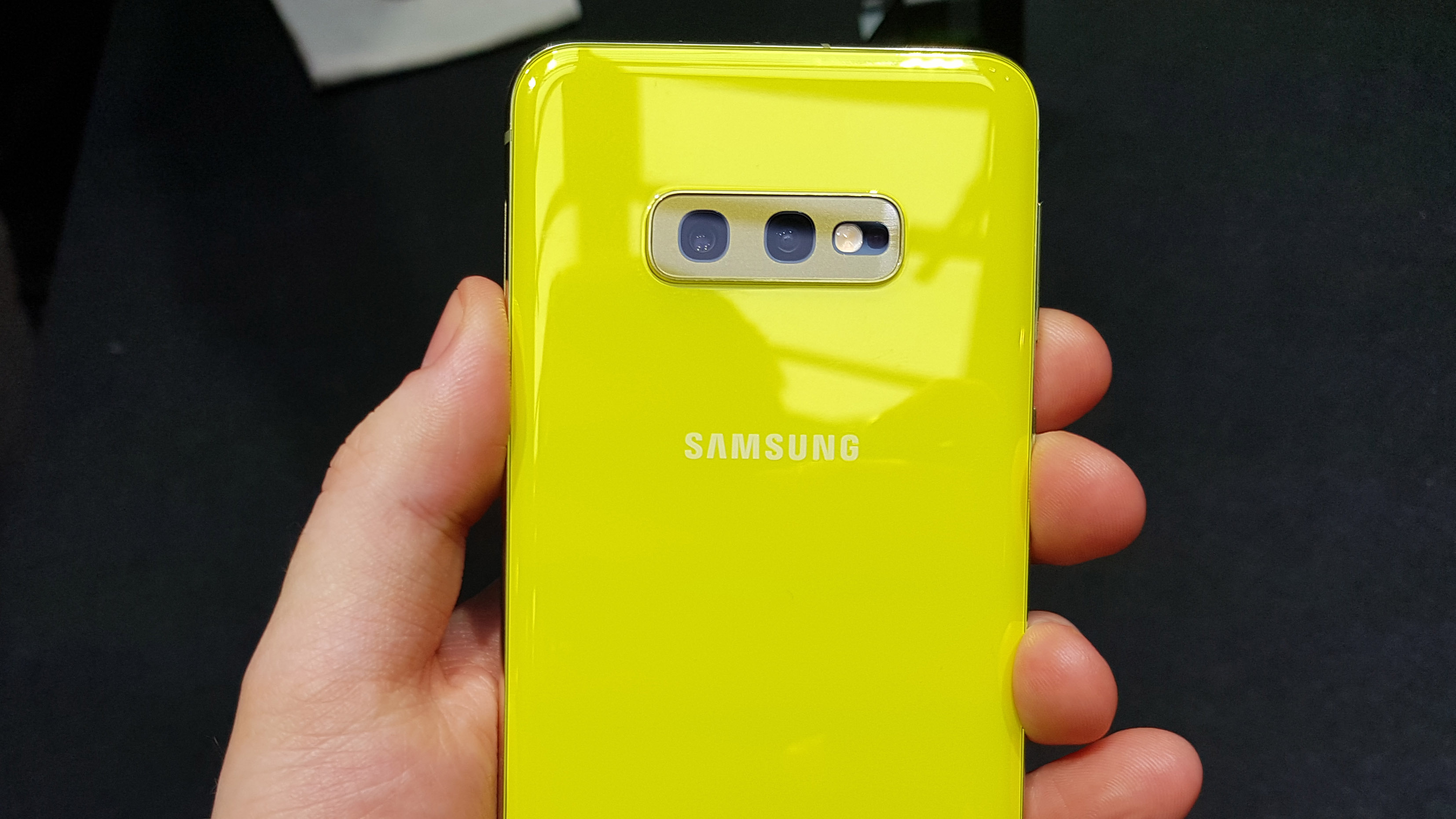
Samsung Galaxy S10E
- Rear: 12MP, 26mm-equivalent, f/1.5, Dual Pixel PDAF, OIS
- Front: 10MP, 26mm-equivalent, f/1.9, Dual Pixel PDAF
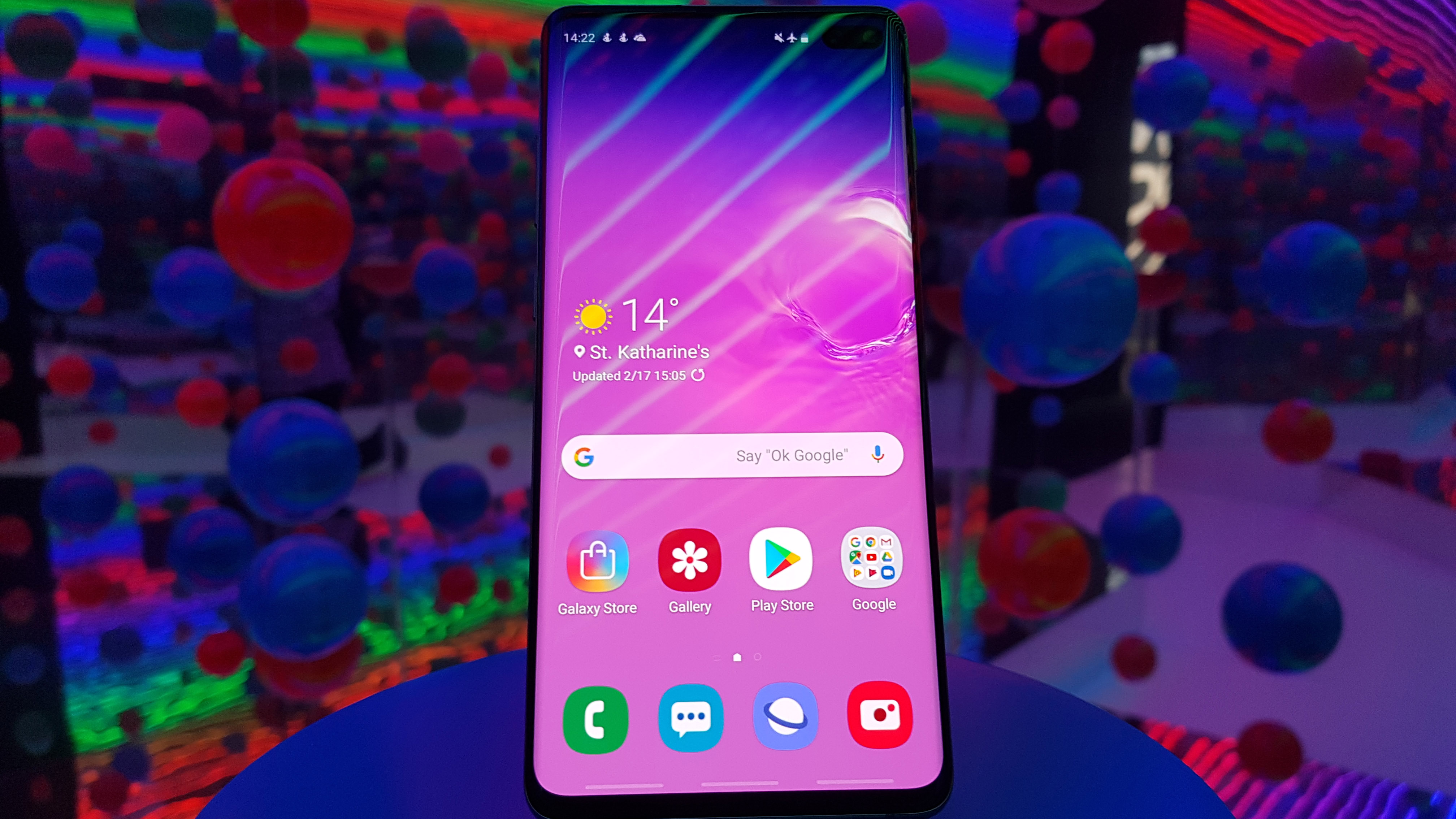
Samsung Galaxy S10
- Rear, primary: 12MP, 26mm-equivalent, f/1.5, Dual Pixel PDAF, OIS
- Rear, telphoto (2x zoom): 12MP, 52mm-equivalent, f/2.4, OIS
- Rear, ultrawide: 16MP, 12mm-equivalent, f/2.2
- Front: 10MP, 26mm-equivalent, f/1.9, Dual Pixel PDAF
Samsung Galaxy S10+
- Rear, primary: 12MP, 26mm-equivalent, f/1.5, Dual Pixel PDAF, OIS
- Rear, telphoto (2x zoom): 12MP, 52mm-equivalent, f/2.4, OIS
- Rear, ultrawide: 16MP, 12mm-equivalent, f/2.2
- Front, primary: 10MP, 26mm-equivalent, f/1.9, Dual Pixel PDAF
- Front, depth-sensing: 8MP, 22mm-equivalent, f/2.2
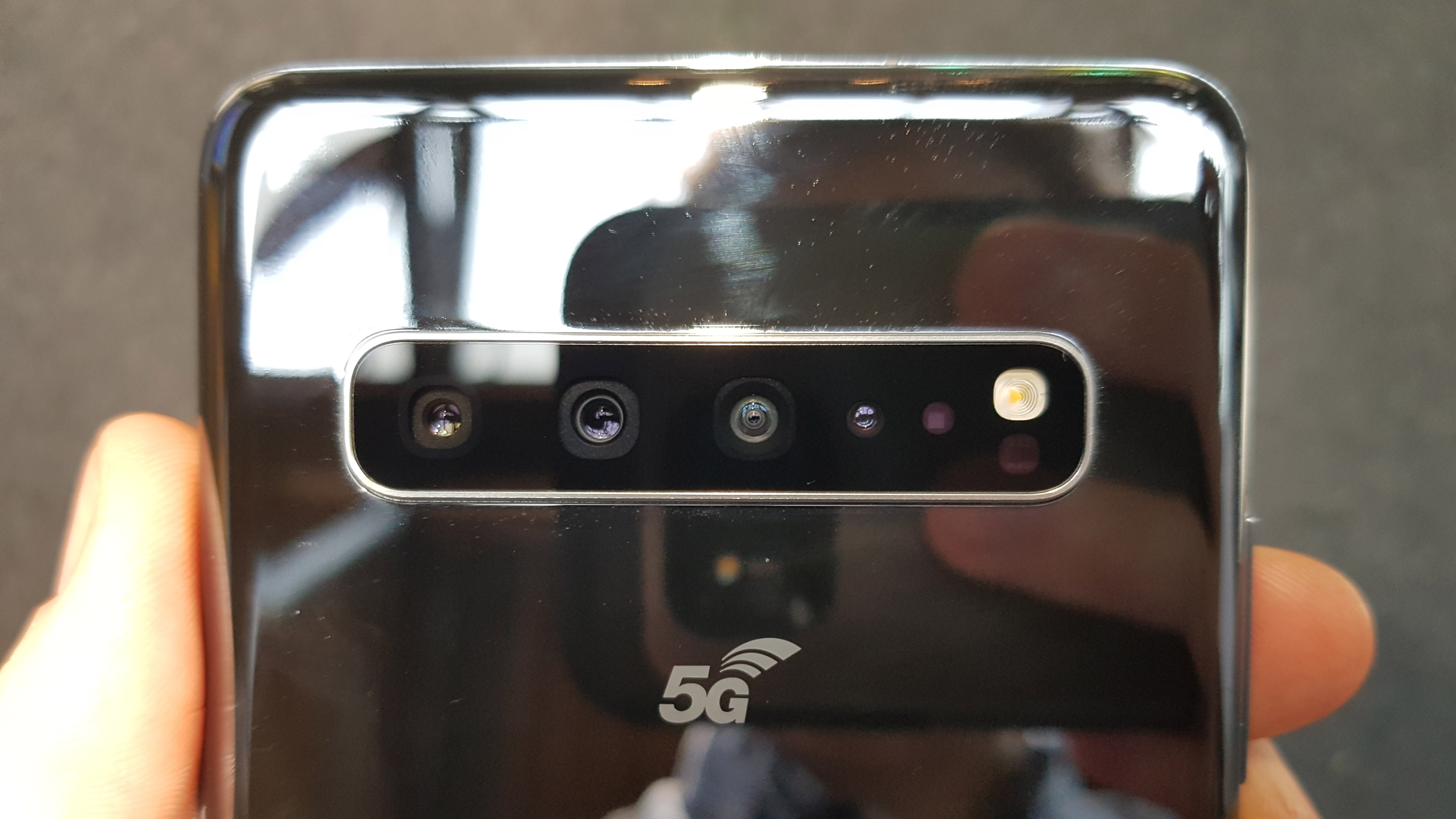
Samsung Galaxy S10 5G
- Rear, primary: 12MP, 26mm-equivalent, f/1.5, Dual Pixel PDAF, OIS
- Rear, telphoto (2x zoom): 12MP, 52mm-equivalent, f/2.4, OIS
- Rear, ultrawide: 16MP, 12mm-equivalent, f/2.2
- Rear: Time-of-Flight 3D depth-sensing camera
- Front, primary: 10MP, 26mm-equivalent, f/1.9, Dual Pixel PDAF
- Front, Time-of-Flight 3D depth-sensing camera
Samsung Galaxy S10+ camera: performance

Shooting with the Galaxy S10+ is a very enjoyable experience. In the camera's default 'Photo' mode, the S10+ just gets on and does its thing - there's no lag or any sense that post processing going on behind the scenes - the phone instantly snaps a shot and off you go.
If you want to take control of camera settings, there's Pro mode that unlocks all aspects of the camera - ISO sensitivity, lens aperture, white balance, auto-focus options, etc - but the normal automatic mode is so good in all environments that you'll rarely need to use Pro mode. Autofocus accuracy is unshakeable, exposure metering always produces bright exposures without blowing highlight detail, and auto white balance never faltered during our testing.
The S10+ uses a 6.4-inch, 1440 x 3040 AMOLED display and it gives a spectacular image preview. We tested the phone on an usually sunny day in Britain, yet the screen at full brightness was always easy to see and never struggled with contrast or colour saturation. Its sheer size also helps with image composition and assessing auto-focus accuracy.

We shot the S10+ back-to-back with an Honor 20. Sure, the two phones are far from direct competitors, but they both use three cameras and much hype has been made of the Honor's camera set-up, so we were intrigued to see how it would perform against a top-tier flagship camera phone like the S10+
Fortunately, Samsung's honour (sorry, couldn't resist!) can remain intact, as the S10+ produces superior image quality in almost all scenarios. The most obvious strong point is its HDR implementation. It does a fabulous job of retaining highlight and shadow detail, as well as boosting colour vibrancy. But the most impressive aspect is that the end results still look natural and never overprocessed or cartoony. What's more, the boundaries between highlight and shadow areas are consistently smooth, with no tell-tale halo outlines around strong highlight areas that can be an unwanted side effect of stacking multiple exposures to produce an HDR shot.
Samsung's careful post processing is also evident when viewing photos at 100% image size. Where the Honor 20 had a tendency to over-sharpen edges and sharp lines, consequently making them look slightly pixelated and jagged, the S10+ keeps edges smooth while still retaining good overall sharpness.
Fine detail is another strong aspect of the S10+. It's primary camera resolves incredible detail levels, even in low light. Here the S10+ is able to reveal details simply not visible in equivalent shots from the Honor 20.
Like many previous Galaxy S-series phones, the S10+ tops out at just ISO 800, but its fast f/1.5 maximum lens aperture and superb optical image stabilisation means it can deliver sharp, bright shots in low light without the need for a sky-high maximum sensor sensitivity. In most scenarios image noise is barely apparent, but the phone can be 'tricked' - photograph a scene with lots of fine detail and the camera will go large on sharpening, and this can result in increased grain in shadow areas of the same scene. However, you'll need to be viewing at 100% image size to notice this, and it isn't distracting unless you're a nitpicking camera journalist.
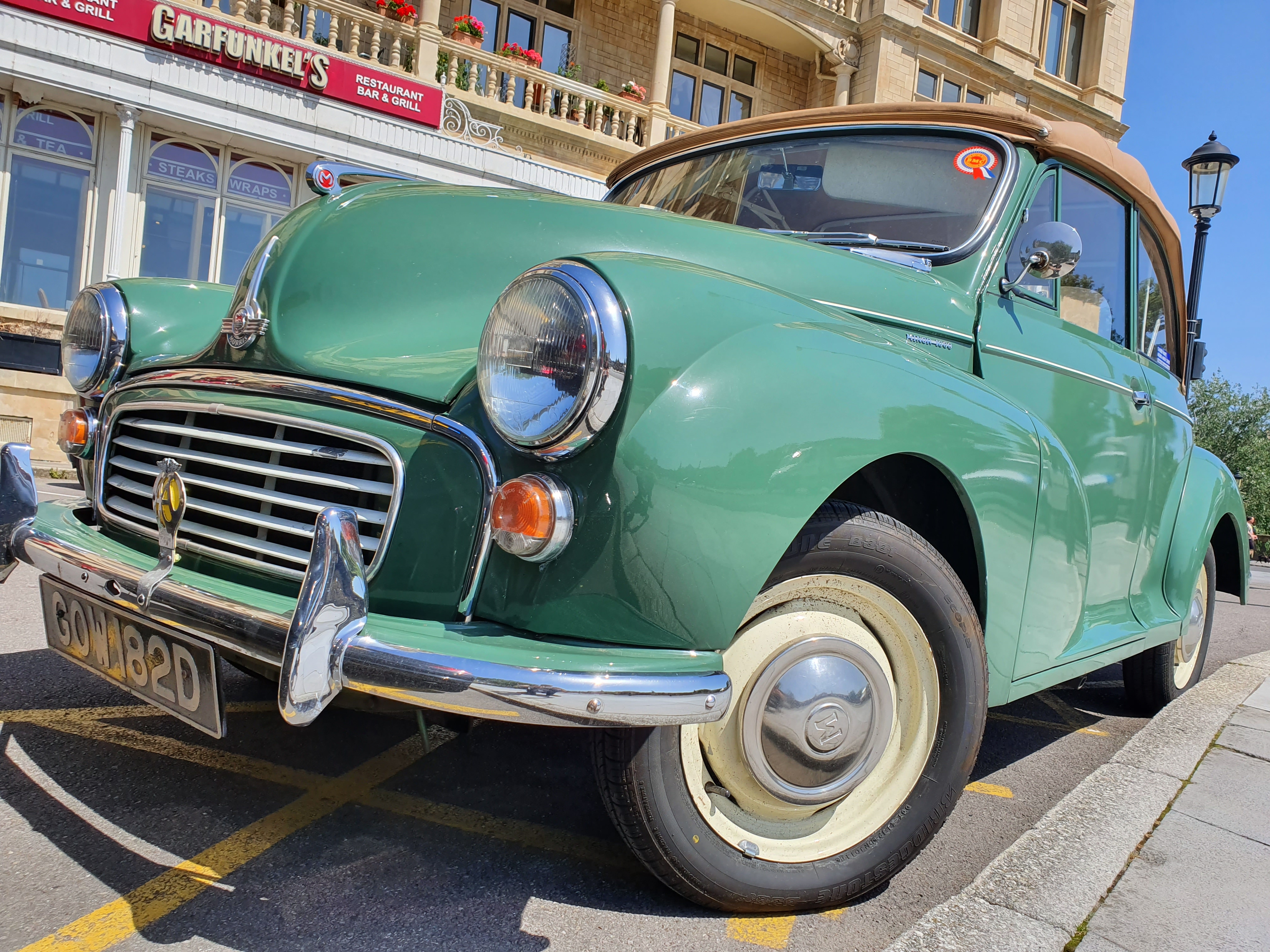
Samsung's triple camera setup in the S10+ also works very well. The main 12MP camera has a 26mm-equivalent focal length and gives a wide enough field of view for most situations.
You can easily switch to the 16MP, 12mm-equivalent ultra-wide camera if you need to squeeze more into frame. It gives good image quality, with centre-frame sharpness almost being a match for the primary camera. However, corner sharpness is noticeably softer and you'll notice significant purple fringing in the corners of frame if you're photographing a high-contrast scene.
Need to zoom in? The 12MP, 52mm-equivalent telephoto camera in the S10+ may be down on optical zoom compared to a phone like the Huawei P30 Pro that boasts 5x zoom, but it's still useful to have and the telephoto camera delivers image quality on par with the primary camera. Not bad considering it's using a smaller 1/3.6-inch sensor, compared to the 1/2.55-inch sensor in the main camera.
Samsung S10+ sample gallery



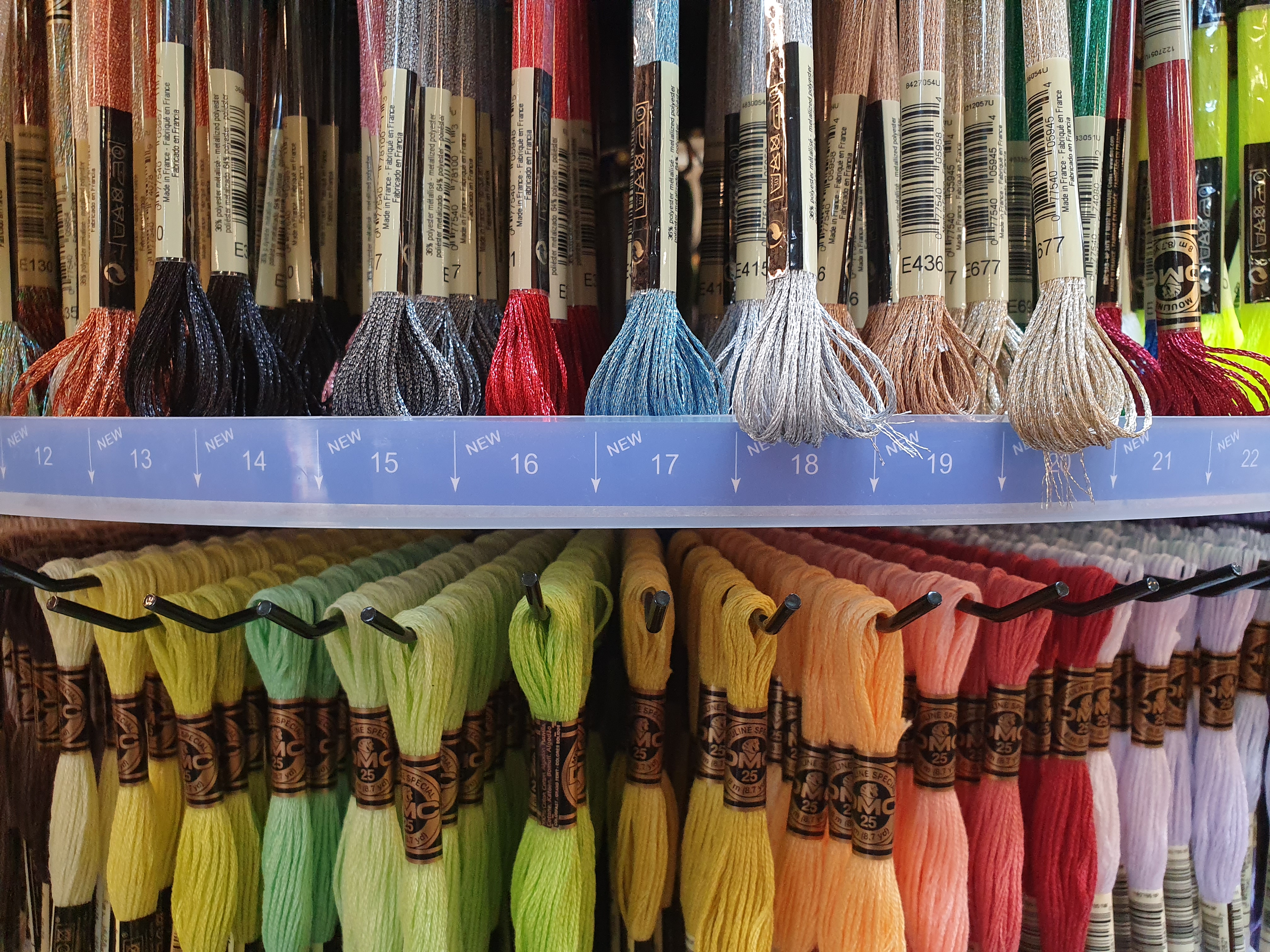





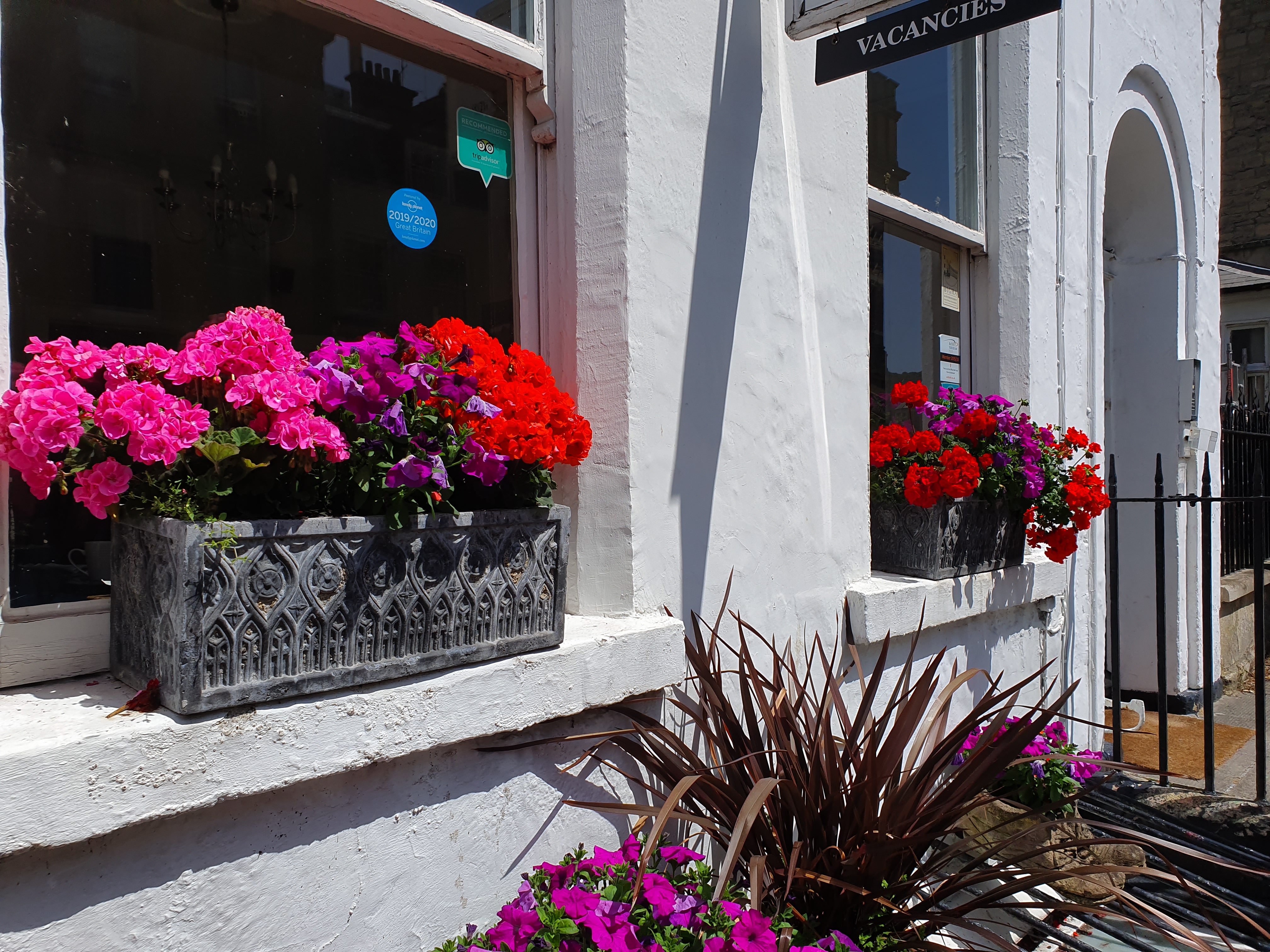









Samsung Galaxy S10+ camera: verdict
The Android camera phone market is the toughest it's ever been, with plenty of options all vying to be in your palm and all offering image quality that can rival even a big DSLR camera. Samsung couldn't afford to slip up in any way with the cameras in the S10+, and we're happy to report that it hasn't.
Some of the camera features may only be mildly tweaked from the Galaxy S9, but the whole camera package in the S10+ works beautifully. The wide/ultra-wide/2x telephoto triple-camera rear array is a highly versatile combo and produces image quality that can rival the very best camera phones like the Google Pixel 3 and Huawei P30 Pro.
Factor the stunning 6.4-inch high resolution display and superb overall phone performance and the Galaxy S10+ is hard to fault as a premium camera phone.
Read more:
• Best selfie sticks for your smartphone
• The best iPhone tripods
• The best gimbals for your iPhone, GoPro and camera
• The best phone cases to protect your camera phone
Ben is the Imaging Labs manager, responsible for all the testing on Digital Camera World and across the entire photography portfolio at Future. Whether he's in the lab testing the sharpness of new lenses, the resolution of the latest image sensors, the zoom range of monster bridge cameras or even the latest camera phones, Ben is our go-to guy for technical insight. He's also the team's man-at-arms when it comes to camera bags, filters, memory cards, and all manner of camera accessories – his lab is a bit like the Batcave of photography! With years of experience trialling and testing kit, he's a human encyclopedia of benchmarks when it comes to recommending the best buys.
